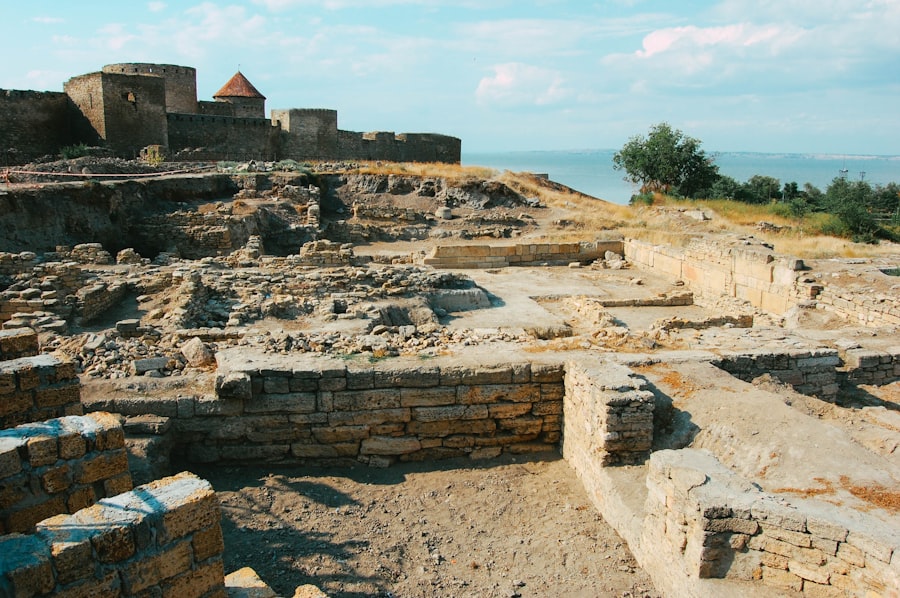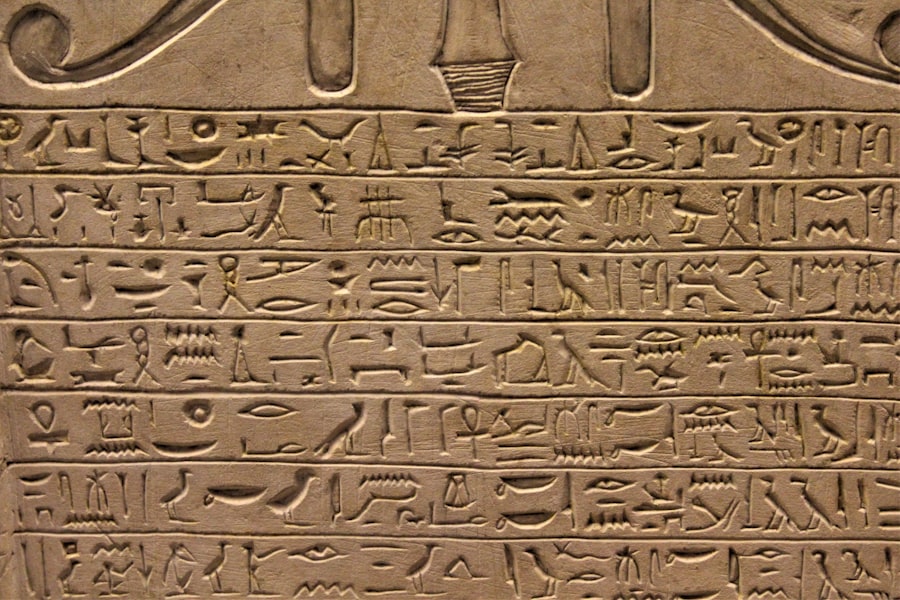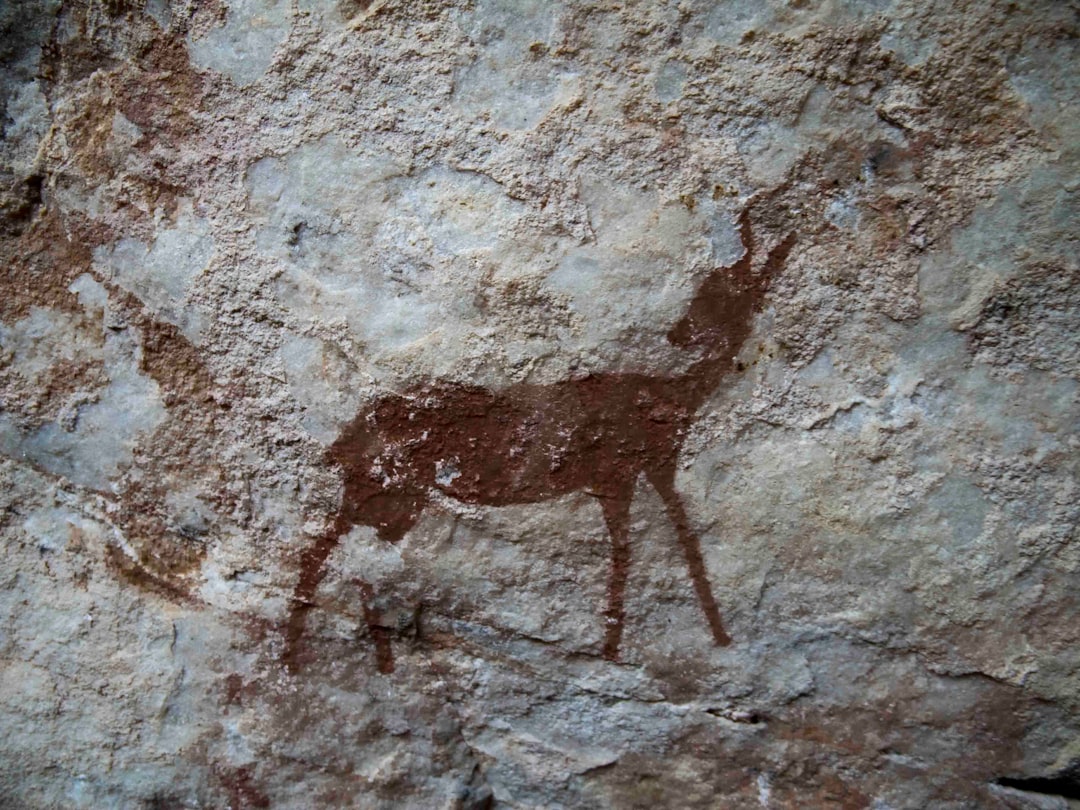Forbidden archaeology is a term that evokes intrigue and curiosity, suggesting the existence of hidden truths about humanity’s past that mainstream science has overlooked or deliberately suppressed. This field of study encompasses a range of controversial discoveries and theories that challenge established narratives about human history and civilization. Proponents of forbidden archaeology argue that evidence exists for advanced ancient civilizations, human-like beings, and artifacts that predate accepted timelines.
These claims often provoke skepticism from the scientific community, which adheres to conventional archaeological methods and interpretations. However, the allure of forbidden archaeology lies in its potential to reshape our understanding of human history and the origins of civilization. The Grand Canyon, a geological marvel carved by the Colorado River over millions of years, serves as a focal point for many of these discussions.
Its vastness and complexity not only captivate visitors but also invite speculation about what lies beneath its layers of rock. The canyon’s rich geological history is interwoven with tales of ancient peoples who inhabited the region long before modern archaeology began to document their existence. As researchers delve into the depths of the Grand Canyon, they uncover not only geological wonders but also artifacts and evidence that challenge the conventional timeline of human development.
This intersection of geology and archaeology sets the stage for a deeper exploration of the canyon’s mysteries.
Key Takeaways
- Forbidden archaeology challenges mainstream scientific beliefs about human history and ancient civilizations.
- The Grand Canyon is a geological wonder, with its vast size and unique rock formations.
- Controversial discoveries in the Grand Canyon include ancient artifacts and structures that challenge established timelines of human history.
- Suppressed evidence of ancient civilizations in the Grand Canyon raises questions about the origins of human civilization.
- Theories and speculations about the Grand Canyon’s origins include the possibility of it being created by a cataclysmic event.
The Grand Canyon: A Geological Wonder
The Grand Canyon is often described as one of the most breathtaking natural wonders on Earth. Stretching approximately 277 miles in length, up to 18 miles in width, and over a mile deep, it showcases an intricate tapestry of geological formations that tell a story spanning nearly two billion years. The canyon’s walls reveal layers of sedimentary rock, each representing different epochs in Earth’s history, from ancient seas to volcanic activity.
This geological narrative not only captivates geologists but also serves as a canvas for understanding the forces that shaped the planet. Visitors to the Grand Canyon are often struck by its sheer scale and beauty, with vibrant colors and dramatic vistas that change with the shifting light throughout the day. The interplay of shadows and sunlight creates a dynamic landscape that has inspired countless artists, writers, and adventurers.
Beyond its aesthetic appeal, the Grand Canyon is a living laboratory for scientists studying erosion, sedimentation, and climate change. The ongoing research in this region continues to yield insights into Earth’s past, while also raising questions about the future of such natural wonders in an era of environmental change.
Controversial Discoveries in the Grand Canyon

Within the depths of the Grand Canyon, there have been numerous controversial discoveries that have sparked debates among archaeologists and historians. Some researchers claim to have found artifacts that suggest advanced civilizations existed in North America long before the arrival of European settlers. These findings often include tools, pottery, and even remnants of structures that appear to defy established timelines.
Such discoveries challenge the prevailing narrative that indigenous peoples were primarily nomadic hunter-gatherers prior to European contact. One notable example involves claims of ancient Egyptian artifacts found within the canyon’s depths. Reports of hieroglyphics and mummified remains have fueled speculation about transoceanic contact between ancient civilizations.
While mainstream archaeologists remain skeptical, citing a lack of verifiable evidence, proponents argue that these findings warrant further investigation. The tension between established archaeological practices and these controversial claims highlights the complexities of interpreting history and the potential for new discoveries to reshape our understanding of human civilization.
Suppressed Evidence of Ancient Civilizations
| Location | Suppressed Evidence | Year Discovered |
|---|---|---|
| Egypt | Advanced engineering in pyramids | 19th century |
| South America | Megalithic structures | 20th century |
| India | Ancient city of Dwaraka | 20th century |
The notion that evidence of ancient civilizations has been suppressed is a recurring theme in discussions surrounding forbidden archaeology. Advocates assert that mainstream academia often dismisses or ignores findings that do not align with established historical narratives. This suppression can stem from various factors, including institutional biases, funding limitations, and the fear of challenging long-held beliefs.
As a result, many intriguing discoveries remain on the fringes of academic discourse, waiting for a more open-minded approach to their significance. In the context of the Grand Canyon, some researchers argue that evidence exists for sophisticated societies that thrived in North America thousands of years ago. They point to unexplained structures, unusual artifacts, and oral traditions among indigenous peoples as potential indicators of a rich cultural heritage that has yet to be fully acknowledged.
The challenge lies in reconciling these claims with existing archaeological frameworks while remaining open to new interpretations that could illuminate humanity’s past in unexpected ways.
Theories and Speculations about the Grand Canyon’s Origins
The origins of the Grand Canyon have long been a subject of fascination and speculation among geologists and historians alike. While mainstream science attributes its formation primarily to erosion caused by the Colorado River over millions of years, alternative theories propose more complex scenarios involving tectonic activity and even cataclysmic events. Some researchers suggest that massive floods or volcanic eruptions may have played significant roles in shaping the canyon’s landscape.
Additionally, there are those who entertain more unconventional theories regarding the canyon’s origins. Some speculate about ancient civilizations possessing advanced knowledge of geology and engineering that allowed them to manipulate their environment in ways we cannot fully comprehend today. These ideas often draw on myths and legends from indigenous cultures that speak of great floods or earth-shaping events, suggesting a deeper connection between humanity and the natural world than is typically acknowledged in scientific discourse.
The Role of Indigenous Peoples in Grand Canyon Archaeology

Indigenous peoples have inhabited the Grand Canyon region for thousands of years, leaving behind a rich cultural legacy that continues to influence contemporary society. Their deep connection to the land is reflected in their oral traditions, art, and spiritual practices. As stewards of this sacred landscape, indigenous communities possess invaluable knowledge about its history and significance that can enhance archaeological research.
In recent years, there has been a growing recognition of the importance of incorporating indigenous perspectives into archaeological studies.
By honoring traditional knowledge alongside scientific inquiry, researchers can gain a more holistic view of the Grand Canyon’s past and its enduring significance for indigenous peoples today.
The Impact of Forbidden Archaeology on Mainstream Science
The emergence of forbidden archaeology has prompted critical reflections within mainstream science regarding its methodologies and assumptions. While some may dismiss controversial claims as pseudoscience, others argue that they challenge established paradigms and encourage innovative thinking about human history. This tension between traditional scholarship and alternative perspectives can lead to fruitful discussions about evidence interpretation and the nature of scientific inquiry itself.
As forbidden archaeology continues to gain traction among enthusiasts and researchers alike, it raises important questions about academic rigor and openness to new ideas. The potential for groundbreaking discoveries exists when scholars are willing to explore unconventional avenues while maintaining a commitment to evidence-based research. In this way, forbidden archaeology can serve as a catalyst for reexamining historical narratives and expanding our understanding of humanity’s past.
The Grand Canyon as a Spiritual and Cultural Site
Beyond its geological significance, the Grand Canyon holds profound spiritual and cultural meaning for many indigenous peoples who regard it as sacred ground. For tribes such as the Havasupai, Hopi, Navajo, and Hualapai, the canyon is not merely a physical landscape but a living entity imbued with stories, traditions, and ancestral connections. These communities view their relationship with the land as integral to their identity and cultural heritage.
The spiritual dimensions of the Grand Canyon are reflected in various ceremonies and practices that honor its natural beauty and historical significance. Many indigenous groups conduct rituals that celebrate their connection to the land while also emphasizing stewardship and respect for nature. As awareness grows regarding these cultural perspectives, there is an increasing recognition of the need to protect both the physical environment and its intangible heritage from encroaching development and environmental degradation.
Legal and Ethical Issues Surrounding Grand Canyon Archaeology
The exploration of archaeology within the Grand Canyon raises important legal and ethical considerations regarding land use, preservation, and cultural heritage protection. Federal laws such as the National Historic Preservation Act aim to safeguard archaeological sites from destruction while promoting responsible stewardship practices. However, conflicts can arise between development interests and conservation efforts, particularly in areas with significant archaeological potential.
Ethical dilemmas also emerge when considering how best to engage with indigenous communities whose ancestors have lived in these regions for millennia. Respecting their rights to access sacred sites while balancing scientific inquiry poses challenges for archaeologists seeking to navigate complex cultural landscapes. Collaborative approaches that prioritize indigenous voices can help foster mutual understanding and ensure that archaeological research honors both scientific inquiry and cultural heritage preservation.
Public Interest and Tourism in Forbidden Archaeology
The allure of forbidden archaeology has captured public interest, drawing attention to unconventional theories and discoveries that challenge mainstream narratives. This fascination often translates into increased tourism as visitors seek out sites associated with controversial claims or ancient mysteries. The Grand Canyon serves as a prime example where tourists flock not only for its natural beauty but also for its rich tapestry of stories surrounding ancient civilizations.
Tourism related to forbidden archaeology can have both positive and negative impacts on local communities and ecosystems. On one hand, it can generate economic opportunities through guided tours, educational programs, and cultural exchanges; on the other hand, it risks commodifying sacred sites or overwhelming fragile environments with increased foot traffic. Striking a balance between promoting public interest while ensuring responsible tourism practices is essential for preserving both cultural heritage and natural landscapes.
Future Directions in Grand Canyon Archaeological Research
As interest in forbidden archaeology continues to grow, future research in the Grand Canyon promises exciting possibilities for uncovering new insights into human history. Advances in technology—such as remote sensing, ground-penetrating radar, and DNA analysis—offer innovative tools for exploring previously inaccessible areas or analyzing artifacts with greater precision. These methods may reveal hidden layers of history that challenge existing narratives about ancient civilizations.
Moreover, fostering collaborative relationships between archaeologists, indigenous communities, and local stakeholders will be crucial for ensuring ethical research practices moving forward. By integrating diverse perspectives into archaeological studies, researchers can create a more comprehensive understanding of the Grand Canyon’s past while honoring its cultural significance for present-day communities. As new discoveries emerge from this iconic landscape, they have the potential not only to reshape historical narratives but also to inspire future generations to appreciate both its natural beauty and rich cultural heritage.
This subject delves into the possibility of ancient civilizations having once inhabited the region, leaving behind artifacts and structures that challenge conventional historical narratives. For those interested in exploring similar enigmatic findings, an article on X File Findings provides a fascinating look into other unexplained archaeological phenomena. This resource offers insights into various discoveries that defy mainstream explanations, inviting readers to question and explore the hidden chapters of our past.
WATCH THIS! 👺 The Grand Canyon Cover-Up: Did the Smithsonian Hide Evidence of Giants?
FAQs
What is forbidden archaeology in the Grand Canyon?
Forbidden archaeology in the Grand Canyon refers to the controversial claims made by some researchers about the discovery of ancient artifacts and structures that challenge mainstream archaeological and historical narratives.
What are some of the claims made about forbidden archaeology in the Grand Canyon?
Some of the claims include the discovery of Egyptian and Tibetan artifacts, as well as ancient underground cities and advanced technological remains, which are said to predate the known Native American civilizations in the region.
What is the mainstream archaeological perspective on these claims?
Mainstream archaeologists and historians generally dismiss these claims as lacking credible evidence and scientific support. They argue that the alleged discoveries are based on pseudoscientific interpretations and do not align with the established understanding of the region’s history.
Have any credible archaeological findings supported the claims of forbidden archaeology in the Grand Canyon?
No credible archaeological findings have supported the claims of forbidden archaeology in the Grand Canyon. The majority of the alleged discoveries have been debunked or proven to be based on misinterpretations, hoaxes, or deliberate fabrications.
What is the significance of the controversy surrounding forbidden archaeology in the Grand Canyon?
The controversy surrounding forbidden archaeology in the Grand Canyon highlights the ongoing debate between mainstream archaeology and alternative or fringe theories. It also underscores the importance of critical thinking and evidence-based research in the field of archaeology.
